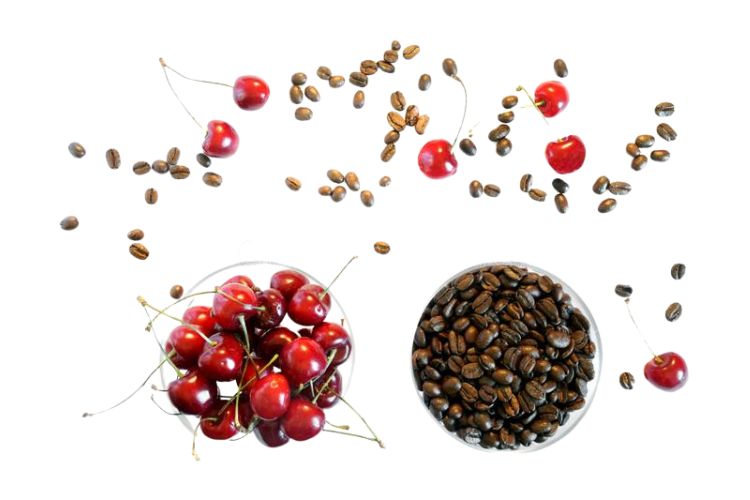
Describe Fruity Coffee – What You Must Understand – Fruity coffee has a devoted following because of its distinctive and rich taste. These coffees are available in a wide range of variations from around the globe.
Where the beans are produced, picked, and roasted affects many of the fruit’s undertone notes.
Many coffee drinkers who have never tasted this variety may be a little wary because they assume it would taste like the fruit that is used to describe it.
Not to add, when asked whether you’d want to try some, there are a lot of myths surrounding this particular coffee that can make you shake your head.
We have included information about the brew, its creation, what to look for, and most importantly, what to avoid to shed some light on fruity coffee.
Keep reading below for a detailed explanation of why you should try this coffee the next time you are in your favourite cafe.
Not drinking coffee with artificial fruit
Avoiding anything that contains fruit oils should be your primary concern while seeking an excellent fruity coffee. Coffee bean fruit oil spraying gained popularity in the 1960s when bean prices skyrocketed.
Farmers unable to grow high-quality beans would then use poor coffee and spritz it with fruit oils to disguise the taste. Unfortunately, despite adding fake-tasting fruit, the unpleasant flavour was still discernible.
Coffee suppliers have found increasingly inventive and tastier ways to incorporate fruit oils into their beans since the 1960s.
Nevertheless, they are still not fruity coffee. You should avoid the grocery store and visit specialist coffee shops where the natural product is sold if you want to discover them.
How fruity flavours develop in coffee
It’s interesting to see that fruit-flavored coffee is relatively standard. You probably already possessed it, even if you weren’t aware of it.
If you’ve ever tasted pineapple, apple, or strawberries in your coffee, you were probably drinking a cup of joe with some fruity undertones.
Remember that over 1,000 distinct flavours are found in a single coffee bean, some of which are more common than others.
Several variables affect how fruity coffee is produced. Most of them have to do with the environment. However, bean handling also plays a significant role.
The elements that influence how coffee beans taste

There are coffee plantations all around the world. To name a few countries, they are from Brazil, Panama, Ethiopia, Kenya, and Indonesia. Cherry varieties vary depending on the locale.
However, the environmental and handling aspects are more crucial than the location. This is especially true of brews with fruity flavours.
Height
High altitudes are often where coffee plants are grown. The greater length allows the plant to concentrate on increasing cherries because the air is colder despite the country’s warm environment.
Peaks atop volcanoes are a familiar place. The harvest produces cherries with a delicious tang and a brighter character.
Climate
As we’ve already mentioned, coffee is usually grown in warmer regions, but other factors also come into play
Rain and humidity are crucial because they tell the plant when to start producing cherries. Beans will have a twisted flavour if they bloom too soon or too late.
Soil composition Fruity coffee
The composition of the soil is crucial for the successful cultivation of coffee plants, precisely, the soil’s nutrients.
For instance, because of the chemical composition of the subterranean magma, volcanic peaks frequently contain nutrients that other grounds do not.
Harvesting
Cherries are harvested in a variety of ways, depending on the farm. While some employ automatic pickers, many continue to use the time-tested hand-picking technique.
Here, the timing of cultivation is more crucial than the method of growing the cherries. If you pick the beans too early, they will taste “green” (like green bananas).
On the other hand, if you harvest them too late, they could get dried out, brittle, and have a more bitter flavour.
Fruity coffee taste
To summarise the information presented above, if you want a naturally fruity coffee, go for a speciality coffee store and select a bag with a medium to mild intensity.
Additionally, the fruity accents will be at their best during the bean’s prime. Purchasing fresh beans for grinding is important because the peak period is two to three weeks after roasting.
When you find a good coffee shop, you can start tasting the beverage to see if you can distinguish the various flavours.

What to search for In premium fruity coffee
When tasting a fruity brew, there are three major components you should pay attention to. It will be easier to identify what you might be tasting if you keep in mind these three things.
Acidity Fruity coffee
Coffee with many acidities was probably grown at a relatively high altitude. It’s also likely that the soil was formed by volcanic activity. By its acidic flavour, you should be reminded of citrous fruits like lemons, limes, oranges, and tangerines.
Additionally, it could contain strawberry, blueberry, and raspberry undertones. While some fruits include citric acid, others have malic acid, which is found in apples and grapes.
Aroma Fruity coffee
The best method to detect fruit nuances in your fruity coffee is to inhale it before tasting it. When it’s still in bean form, after it’s been ground, when it’s wet, and after you’ve brewed it, you want to smell the aroma.
Naturally processed beans have a more pungent smell, so smelling them will also be helpful. Naturally processed coffee typically has a sweeter flavour with hints of blueberries, strawberries, mangos, and flowers.
Many people can distinguish subtle flavours more easily with their noses than with their taste buds.
Sweetness
If you ever have the chance, consider eating some coffee cherries; they are red fruit that is incredibly tasty. Some of its sweetness dissipates into the bean as the fruit sits during the manufacturing period, giving the bean a subtly sweet flavour.
A fruity undertone is produced when the coffee’s acidity and natural sugars interact. Keep in mind that depending on how the beans react to the tastes and acids in the fruit, they may also develop a sweetness akin to honey or caramel.
Coffee flavours often use fruit

One coffee bean can have more than 1,000 flavours, as discussed above. Some of them are so faint that human taste senses cannot detect them. It makes sense that it can be difficult to distinguish the fruity flavour among all the different notes.
However, fruity flavours can be distinguished with some skill because they are more prevalent than most.
Conclusion
Fruity coffee frequently has a subtle undertone that can take some time to identify and enjoy. Remember that if the flavours are overpowering, the beer was probably doused with fruit oil.
Look for beans from respected farmers who have taken the effort to cultivate their crops to the best of their abilities if you want to find a naturally fruity bag of beans.
We hope this post has helped guide you through the complex world of fruity coffees and introduced you to a variety of new beverages that may become your fresh go-to cup of joe.
You can discover your preference’s ideal sweet or citrous drink by tasting even one at a time.